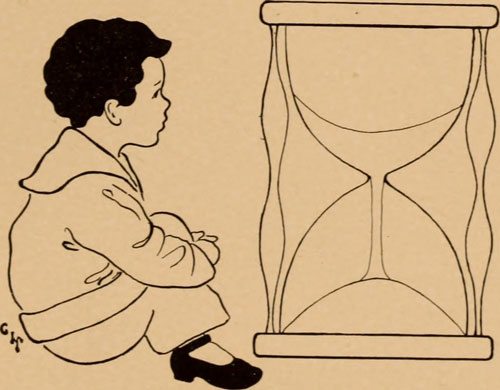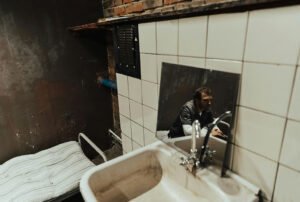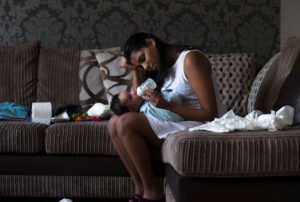
October 26th, 2017; Roll Call
One day before the funding for the Children’s Health Initiative Program (CHIP) was to expire on September 30th, 2017, NPQ wrote about the dire consequences the lapse of this successful children’s healthcare program would have for the almost nine million children it served. Congress did not act and the program, at the time of this writing, has limited funds, and will soon expire in most states. The outcomes do not look pretty for the states that have administered (and liked) this program, or for the agencies, organizations and medical professionals that have worked with it, and especially for the women, children, and families that have benefited from it. The lack of funds, even for the short term, will have consequences that are fiscal and human, and many will reverberate for years to come. Perhaps the best explanation comes from a recent research report from the Georgetown University Health Policy Institute Center for Children and Families, “What Are the Consequences of Congressional Delay on CHIP?” by Tricia Brooks, Joan Alker, and Karina Wagnerman.
The authors point to four key findings which they state as follows:
- The children most at risk of losing CHIP coverage soon are likely those who reside in states running out of funds quickly with separate CHIP programs. At least six states—Arizona, California, the District of Columbia, Minnesota, Ohio and Oregon—are predicting they will run out of money by the end of the year or early in January. At least six other states—Colorado, Pennsylvania, Texas, Utah, Virginia, and Washington—have announced their intention to take action before the end of the year even if their funding is not running out then. While the federal government has paid out some emergency funds, the money available for redistribution won’t last more than a month or two.
- Predicting precisely when states will run out of money is virtually impossible. Most states operate in a capitated environment, meaning they must make per-child payments to health plans a month in advance. This is just one of the details that complicate the assessment of when a state will run out of money. Other factors, like surges in enrollment due to a successful back-to-school outreach campaign or a hurricane, could result in a state depleting its allotment more quickly.
- States cannot wait until they totally exhaust federal CHIP funds to take action. Program changes, including notifying families and other stakeholders, take time and money…Even states with funding lasting into early 2018—including Colorado, Texas, Virginia, Utah, and Washington—plan to send notices in November or December. Utah has already submitted a state plan amendment to close down its program to hedge against Congressional inaction. Past experience shows that even temporary enrollment freezes are likely to cause significant declines in child enrollment.
- Delays in CHIP funding create unnecessary chaos and confusion for states and families. Inaction by Congress costs states time and money as officials grapple with various “what if” scenarios and develop contingency plans to meet their responsibilities to notify families, managed care plans, providers, and other stakeholders of any changes to their state CHIP programs. Even if Congress eventually funds CHIP, children are likely to fall through the cracks due to the uncertainty caused by the delay in funding.
In-state advocates are also weighing in on the impact this is having. The nonpartisan Medicaid and CHIP Payment Access Commission discussed the status of the legislation. “It’s unfortunate from a beneficiary perspective and a public policy perspective that these people are held hostage to whether we have the right vehicle, what the legislative agenda is, what the offsets are said Marsha Gold, a commissioner and consultant from the District of Columbia. Data from this group is often cited as a guide for when states will exhaust all federal funds.
The data shows that half of all CHIP children live in five states: California, Texas, New York, Florida, and Pennsylvania. California, Florida, and Texas will be impacted by a lack of funding early in 2018. Florida and Texas predict they will run out of federal funds in January, but given the factors they are both dealing with from hurricanes, it could come sooner.
Sign up for our free newsletters
Subscribe to NPQ's newsletters to have our top stories delivered directly to your inbox.
By signing up, you agree to our privacy policy and terms of use, and to receive messages from NPQ and our partners.
States are facing difficult choices. They can freeze enrollment in CHIP now, in anticipation of less or no future funding. Experience shows that this creates chaos and further unenrollment. While states have options for how to end enrollment for current CHIP children, they may not be able to do it in ways that coordinate with other insurance enrollment periods (such as Medicaid or the ACA), so if CHIP funding is not renewed, an estimated 1.2 million children would likely become uninsured, increasing the uninsured rate among children by 37 percent.
For the nonprofit community as well as the states, this is a crisis. It is a crisis for those who work in the agencies and organizations that serve the children and families that qualify for CHIP, who may lose access to basic health care coverage for their children. That loss may force families to choose between health care and other basic necessities, having a ripple effect on whether a parent can afford to work or go to school. As states struggle to determine how and when to notify families that their CHIP programs will end, families and others struggle with tough decisions and untenable options to fill that healthcare gap.
As the authors of the Georgetown University research report conclude:
Only once in CHIP’s 20-year history has funding for CHIP lapsed temporarily: after President George W. Bush twice vetoed reauthorization. At that time, funding lapsed for no more than five days before Congress provided a series of short-term financing patches that bridged funding gaps until CHIP was reauthorized in 2009 under President Obama. The current lack of action in Congress is unprecedented and puts at risk the nation’s success in covering children. A long-term and expeditious extension of CHIP is critical to preserve and protect the nation’s historic achievement in covering more than 95 percent of children.
Right now, that extension may come too late for many struggling states who would like to see CHIP preserved, for many nonprofits who serve the families who benefit from it, and for the many children who truly need this health care. They deserve far better from the adults in their lives.—Carole Levine













